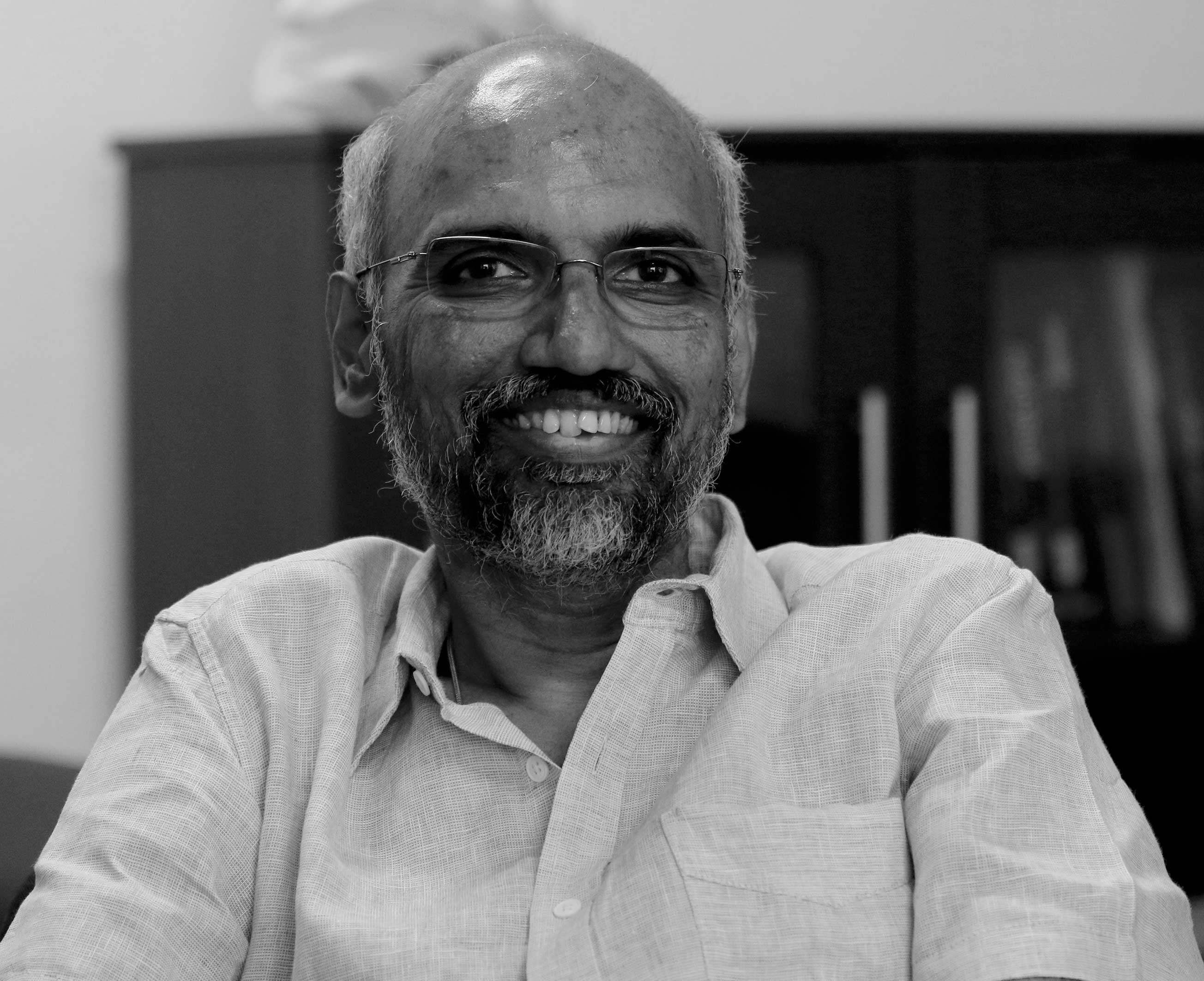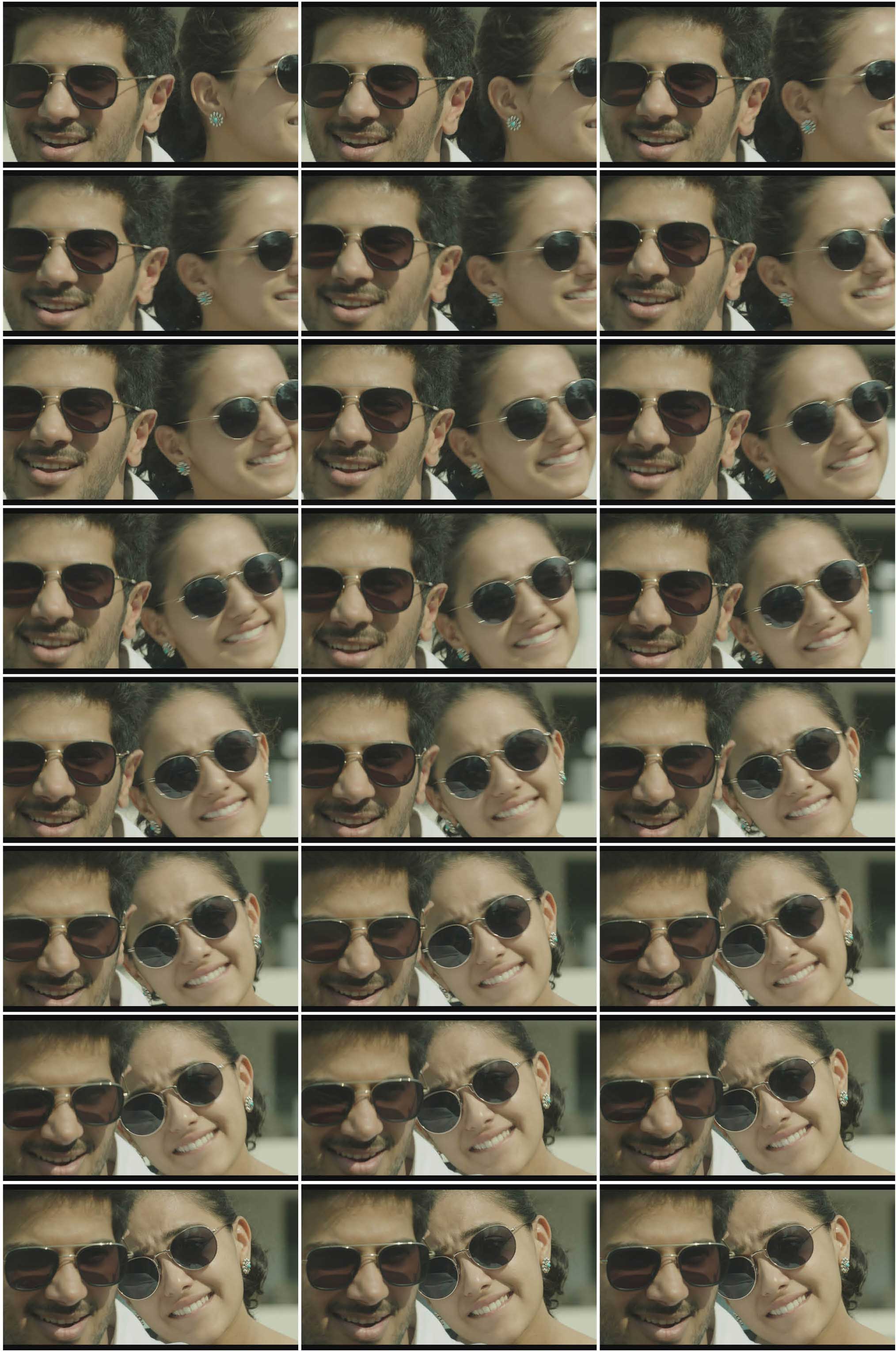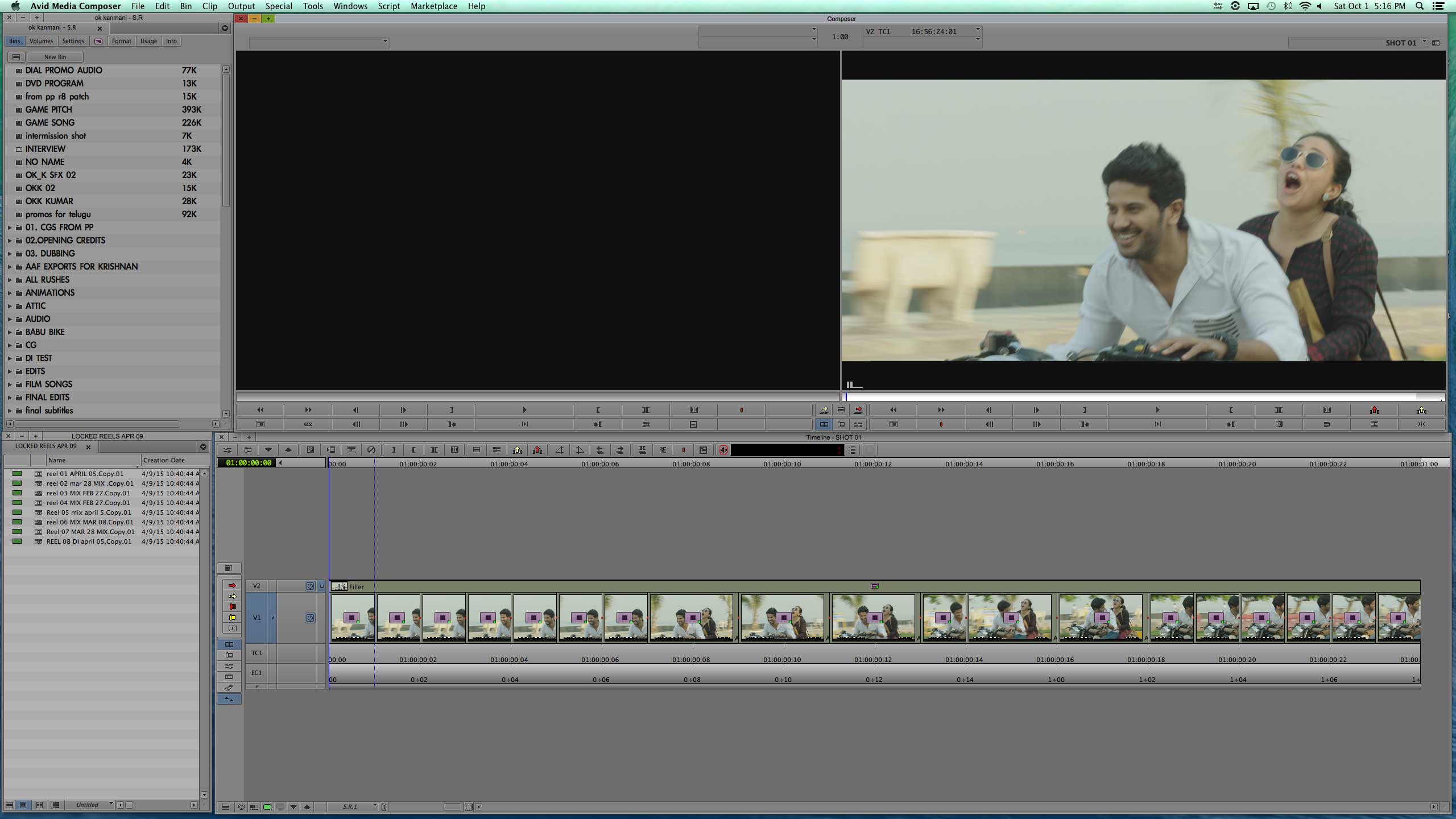A Slice of Time
Multiple-award-winning film editor Sreekar Prasad on how the essence of cinema lies in the seconds that make up its images and frames
Praveena Shivram

In the 1990 Johnny Depp film Edward Scissorhands is this
fascinating scene when Edward is working on an ice sculpture; the little flecks of ice that he is chipping away with furious concentration fall like snow around Winona Ryder. It was one of those surreal moments that come back to you much later in life with the full force of non-sequitur retrospection, and you realise that what is cut away is just as important as what remains. And, oftentimes, how we shape our stories is defined by what we choose to remove from it.
This, then, has always been my perception of what editors do for cinema. They give the film its identity – the timeline. And within that all-encompassing timeline, they conduct a perfect symphony of seconds, the 24 frames within each second also marching to the conductor’s tune.
The first time I heard about Sreekar Prasad was not because of his game-changing editing aesthetics in cinema, where the shots bleed into each other rather than cut into each other, or the numerous awards and recognition he was getting with his work in all kinds of cinema; it was because a friend of mine attended one of his workshops at FTII, Pune, where he simply gave them a song to edit, allowing the students to first-hand experience the maddening world of shifting rhythms and static shots. This aspect of him was evident even when I met him for the interview at his nondescript office space – with the only highlighted piece of furniture being an old film editing table and an inner room with two large monitors and Nani Sir (as he is fondly called) in the kitchen making me a cup of green tea – redolent of an era gone by, where the teaching and the taught (his assistants hovering in the background) are intertwined in a mesh of learning. And the warm, almost bumbling professor persona he exuded that implied more than it said, giving you the opportunity, too, to chip away the bits that hide the real story.
In fact, this quality of life suddenly turning into seconds waiting to come into their own is something Nani Sir candidly accepts and invites you to see. ‘When I am in the outside world, sometimes, I feel something is taking too much time and I wish that particular situation would just get to the point.’

Excerpts from the interview
When you work with rushes – images shot in real time but denoting time in a different space – that you then need to reorder – which means you are now working in real time and you have to make those images denote a different time and space – do you at all feel lost?
Basically, for me, it’s the storyline. It’s not so much about different times at one time, because I usually get assimilated content. So the concentration is on the totality. My perception is that I am trying to tell a story and pick the right moments that excite. We usually work with a ratio of 1:6 – that is, for a two-minute sequence we will usually get 12 minutes of footage, and sometimes even 50 minutes of footage! So working through the rushes means keeping a lot of things in mind – the background spaces, the atmosphere, the grandeur of the scene, the geography, the performance (which is usually the centre point), and because I already know what the film is about, when I see the rushes things automatically start to fall in place for me. Actually, till I see the rushes, I am very nervous. I wonder how I am going to go about it because each genre is different, the timing of the shots and the length of the film is also different. But when I see the rushes, twice or even once, the jigsaw falls into place in the mind by itself.
How conscious are you of the elasticity of time? In the sense, because you are working with frames and there are 24 frames a second, how do you then consciously gauge time cinematically? Because time itself, somehow, loses its meaning, or expands in meaning, when a second can hold that much.
Yes, that’s true. But it is always the given moment pertaining to the script that you are looking at. Sometimes, eight frames are enough to create a very big impact. Sometimes, you need to hold a moment for one or two seconds. How much do I show in 24 frames to get a glimpse of that moment? The time used to express an emotion in the film is crucial and it is up to us to judge whether the shot needs to be five seconds long, or eight seconds or 10 seconds. Even one second extra could make the shot redundant. You also need to know when to move on to the next shot or frame. Time also plays a role in the texture of the shot itself – a wide shot, for instance, needs a little more time and space to be enjoyed. And the nature of time, somehow, also changes when you look at the film on big screen. I think this is a disadvantage most new editors have because watching it on the big screen (as we did while editing with the negative itself earlier) as against a monitor are vastly different. How much time you give a particular shot, how do you assimilate the length of the shot change when you see the film on a big screen? Especially because every second matters. We are working to the second and psychologically it is closer to how our heartbeat functions. The other reason why we work to the second is because music, or the beat, is also metrically cut to the second. For music and visual to come together as a seamless entity, you work with the one-second rhythm.
I understand that the overall vision is that of the director’s and your job is to primarily bring that vision together, so how much of yourself do you find that you need to hold back? How do you curb that temptation to bring in objectivity when the filmmaker is largely viewing it subjectively?
I have to stop myself! Initially in my career, there were fewer chances to express myself. But even then, as I do now, the first edit I do independently, without the director. So maybe that’s where the objectivity comes into place. Also, you are constantly collaborating with the director, and sometimes editing simultaneously as they shoot. A difference of opinion, if at all, comes only at a later stage. But because you are usually at the same wavelength, it becomes much easier to explain a point of view or take another’s point of view.
Which brings me to this idea of ‘slow motion’ and ‘reverse edit’ and ‘fast montages’ and ‘stop motion videos’ – all of them work with some aspect of time. And they are all polished at the editing table. So my question is, what excites you more? Long, static shots or shots that play with time?
I think the quirky shots challenge me creatively. Not when it is used as a gimmick, of course, but when you get a chance to explore it to its maximum potential. There was film I worked on, Kattradhu Thamizh (2007), where in one of the songs the protagonist is smoking weed; we used a slight strobe effect and that completely added to the energy of the song; it blended in with the mood and this was something we decided at the editing table.

With songs and fights, I am assuming the concept of time works differently, because there is willing suspension of disbelief made believable simply through how the shots are placed together. How much do you need to believe in the believability of that song or fight to bring it out on screen?
I also look to suspend my disbelief. I look at it as the audience, ‘what would I enjoy watching?’ It also depends on the target audience, of course. For instance, if I am working on a Superstar film, I will suspend time and stretch it at many places in the film as realistically as possible for a reaction from the audience. It needs to look real even in an unreal situation, without flashy effects. Also, today, the songs are not a different entity anymore. They are usually part of the narrative. And this has been a gradual shift in the past 10 years, even in the length of the song itself. From five- to six-minute songs, they are now three to four minutes long. I feel this format of songs within the narrative definitely works better and is challenging, too, as you need to pack in a lot of information in a short duration of time for the story to move forward. Time, interestingly, dictates the mind of the audience.
From rough cut to final cut, does the sheer volume and tediousness ever get to you? How do you remain centred within the timeframe of the film and true to its aesthetics – both in terms of how long a project takes to finish and in terms of the ‘time’ represented in the film.
Yes, sometimes it feels like it is going on and on, but I think one way to beat the tediousness is that I am always working on more than one project at a time. I don’t feel bogged down because I am balancing my work with different genres and not working on the same genre of films. Also, you are editing in two stages – first when you put individual sequences together and then watching the whole film together the dynamics change again. The simplest example I can give is when there is a dialogue between two people that is cut as two shots, we forget about the silences in between. That brief pause, that profundity in one second, can elevate the experience, and you notice this when you see the film in its entirety.
Do you find, sometimes, you carry the film with you long after it is done? Is there a moment you know when a project is over?
You always wish you had more time to edit. When you work on the edit, you are emotionally attached to it and when it releases, that is a definite high. Sometimes it happens a year after you are done because you receive an award for it. So there is no one moment; I think it changes from film to film.
And, finally, do you think it is more important for the editor to understand the essence of the film he/she is working on, or is it more important for the editor to understand the nuance of his/her craft?
I think the essence of the film is more important. That is what will help you edit the film in a seamless manner. The audience should never even be aware of the cuts, and that kind of seamlessness can be achieved only if you understand the essence of the film.
Share